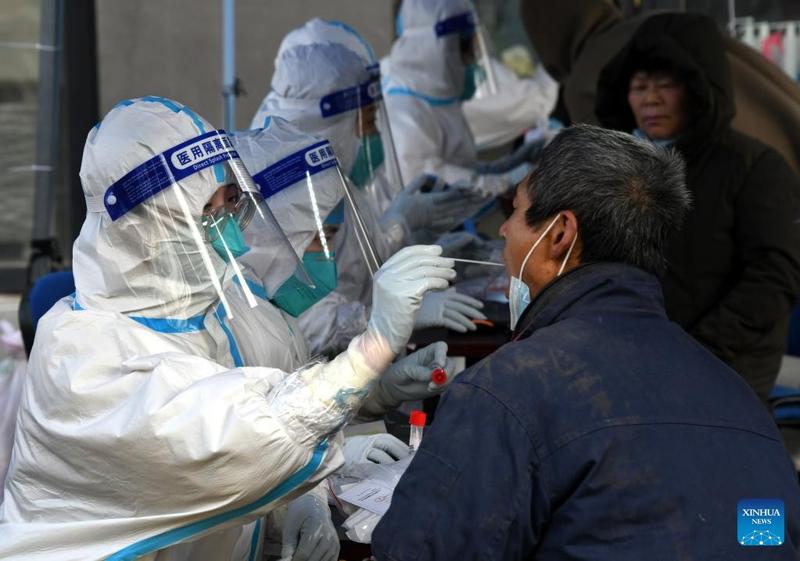 Medical workers take swab samples from people for nucleic acid test at Shibei district, Qingdao city, East China's Shandong province, March 15, 2022. (PHOTO / XINHUA)
Medical workers take swab samples from people for nucleic acid test at Shibei district, Qingdao city, East China's Shandong province, March 15, 2022. (PHOTO / XINHUA)
The country's daily caseload of novel coronavirus infections has hovered above 1,000 for four consecutive days, with 1,860 new local symptomatic cases announced on Tuesday.
Negligible as this may be compared with corresponding figures overseas, this highlights the rapid resurgence of the virus, with 5,081 confirmed locally transmitted cases announced on Monday, a record daily high over the past two years. And this wave of the virus has swept into 28 provincial-level regions with a total of 18,000 locally transmitted cases detected between March 1 and March 15.
This has prompted increasing calls for re-evaluating the present pandemic control regime as worries mount over whether the country's economy can afford to sustain the current approach that aims to curb community spread as quickly as possible once any infections appear.
Recognizing that the nature of the pandemic has changed, the authorities have responded. Given the rapidly growing number of daily infections because of the highly contagious nature of the Omicron variants but also their tendency for reduced lethality, the ninth edition of the country's COVID-19 diagnosis and treatment protocol, released by the National Health Commission on Tuesday, has many updates to the COVID-19 testing, management and treatment regime.
Besides optimizing procedures for the detection and reporting of infections, the most significant change is "by-category" management. Considering that most people infected with the Omicron variants show either slight or no symptoms at all, and thus need no treatment, those with minor symptoms will be put under medical quarantine, instead of being hospitalized.
The authorities' decision to stick to the dynamic clearing strategy while adjusting corresponding tactics in its implementation is a sign of both the responsiveness of the authorities to the changing characteristics of the epidemic but also their confidence that the Omicron variants are controllable and that the dynamic clearing approach is still the most effective way to contain the virus.
There is no doubt about the government's resolve and capability for mobilization, nor the public's willingness to cooperate. But earlier, faster, and better implementation of pandemic responses are needed to reduce the disruptions to the normal lives of ordinary people, as well as economic activities.
There is also much work that needs to be done to increase vaccination rates and accelerate the development of vaccines and medicines so the country can seize the initiative in its fight against the virus. Once it has that, the country can gradually relax its policies.


